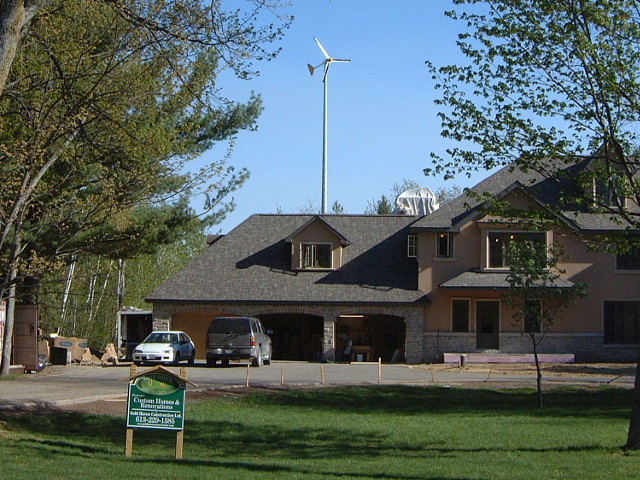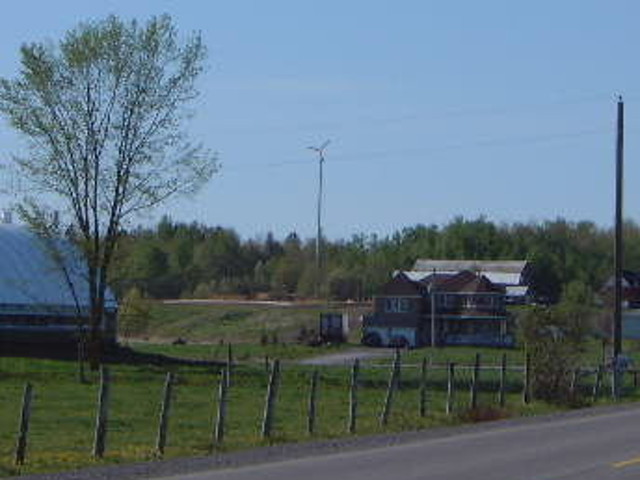Wind generator - Installation of a wind turbine (10kW)
This is an example installing a 10kW Bergey wind turbine which I worked on with Ottawa Solar Power. The blades are 10 feet each making for 20 feet in diameter. The tower is over 100 feet high. Some of the work was done during the cold Ottawa winter.
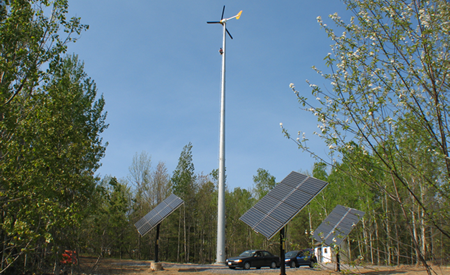
This wind turbine uses a self-supporting tower. The alternative would be to attach guy-wires to the tower in order to hold it up. A self-supporting tower requires a massive base to keep the tower and wind turbine from falling over and is usually more costly than using guy-wires. However, a self-supporting tower typically looks more elegant than one using guy-wires. In this case, appearances were very important for the customer. For that reason you'll see details below about the big hole needed for the massive base and the concrete pouring of the base.
Digging the hole (December) - We were lucky to have very little snow in December. The hole for the base was dug, walls for the wooden form put up, and the cylindrical metal column that the tower would be bolted to, put in place. The last photo was taken in late January, awaiting the pouring of the concrete.

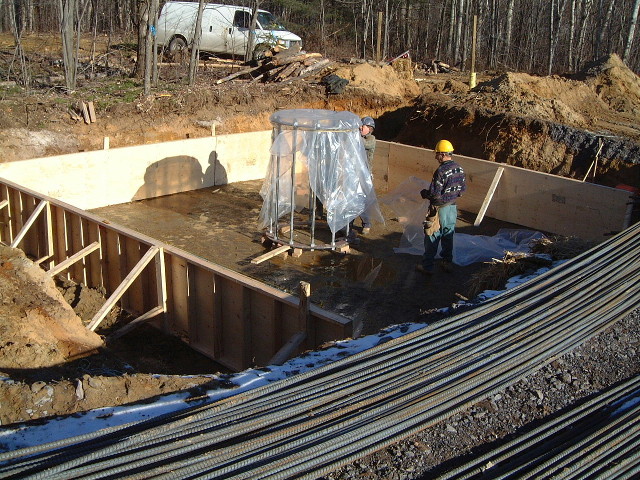

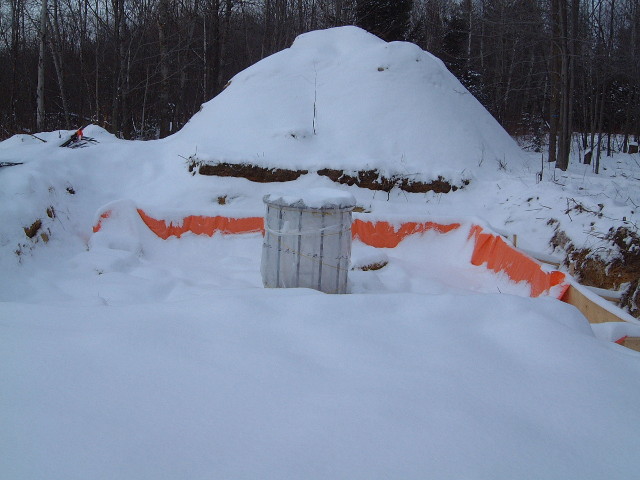
Pouring the concrete (February) - Since the concrete for the base was being poured in the middle of the winter, a warm building had to be built around it. The building was a temporary thing made of two-by-fours with orange tarp walls and roof. It was heated with construction heater, basically a large gas powered torch.
The tall concrete pouring truck arrived as seen in the first photo below. The orange tarp building can be seen just on the far side of the front of the truck, below the solar tower. Trucks bearing loads of concrete arrive and pour their concrete into the back of the concrete pouring truck, as shown in the second photo. The concrete is then sent up the tall tube and down into the tarp building.

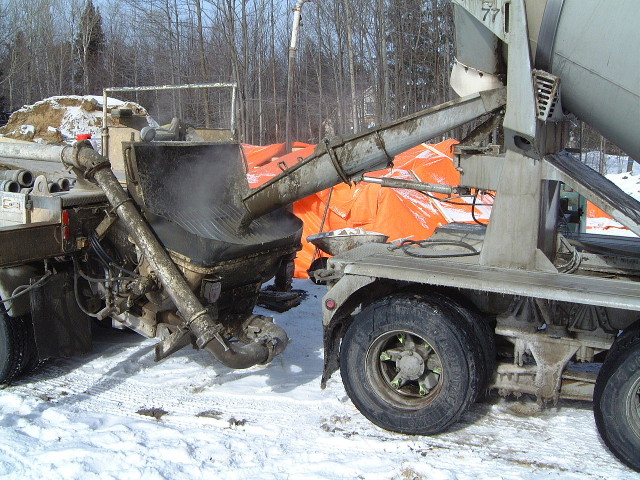
Inside the tarp building you can see that the hole has been filled with rebar. The middle photo shows the concrete pouring hose snaking down from the roof. The last photo shows the guys directing the concrete into the rebar base.
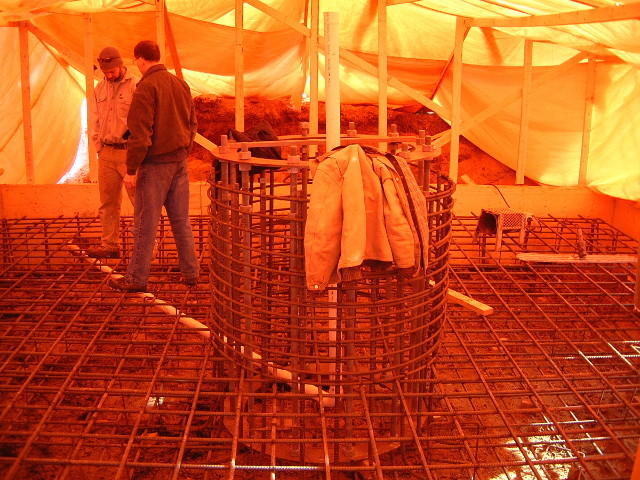
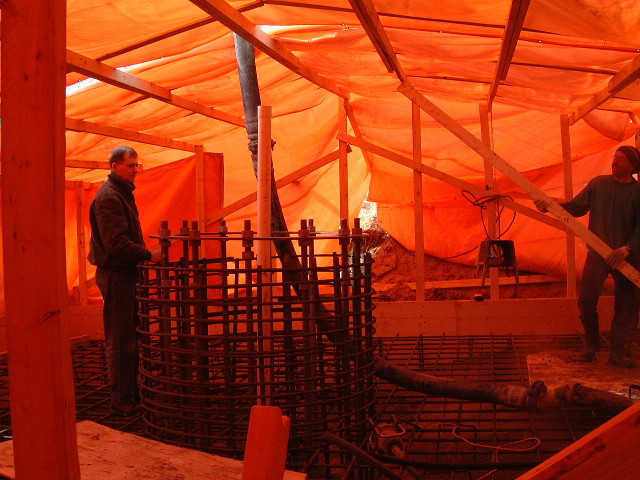
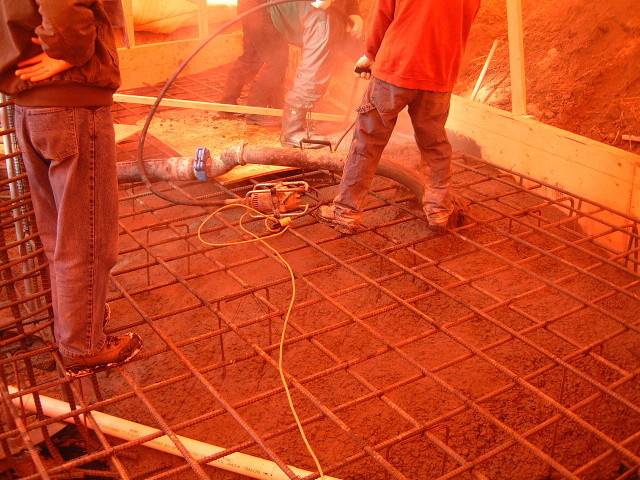
A couple of weeks later the concrete is hardened enough that the orange tarp building is removed. A layer of snow now covers the concrete base with only the central column that the tower will be bolted to showing through. We wait for spring.
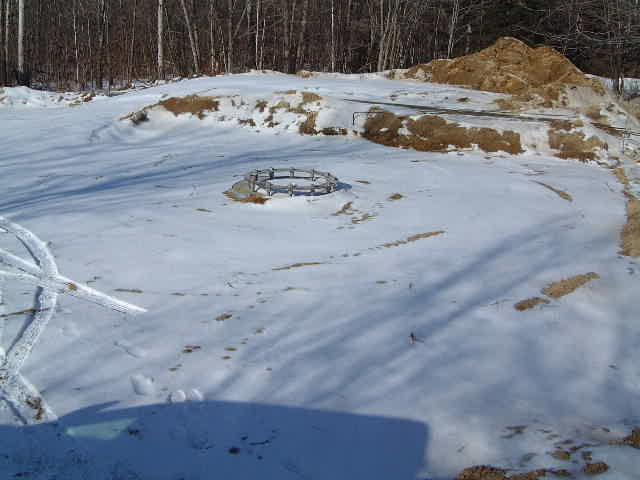
Installing the tower and wind turbine (May) - The three column segments making up the tower, the wind turbine and its blades have all arrived. And so has a crane. The three column segments are each tapered like truncated cones. The first one is lifted and bolted into place. Then the second one is lowered over the first one. Being tapered, the top portion of the first one is actually inside the bottom portion of the second one and similarly for the top and middle ones.
Next, as the following photos show, while the crane holds the turbine body up, the wind vanes that will keep it turned into the wind are attached. Then the three 10 foot blades are bolted on. Someone then goes up the tower to help attach the wind turbine to the top of the tower and do the final connections.
There was enough wind that day that when we released the brake, done by releasing the shorted wiring (by a safe switch of course), the inverter quickly showed 8kW of output!
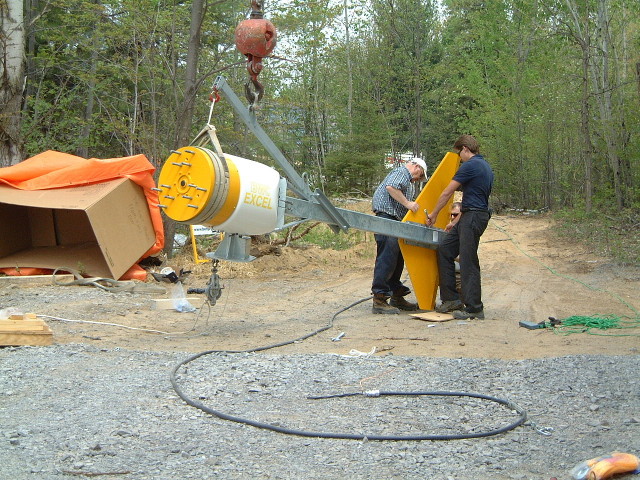
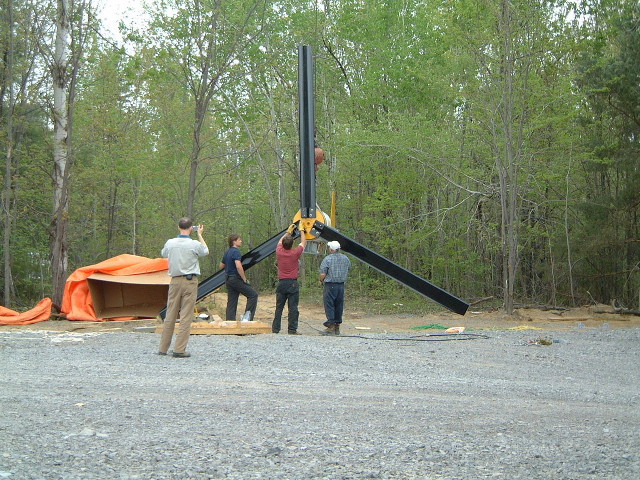

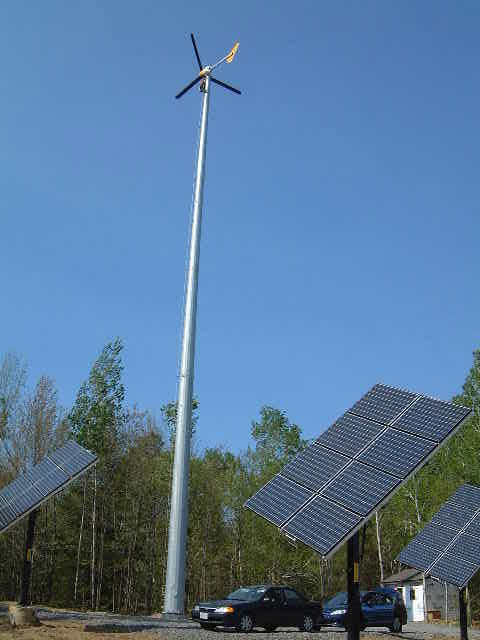
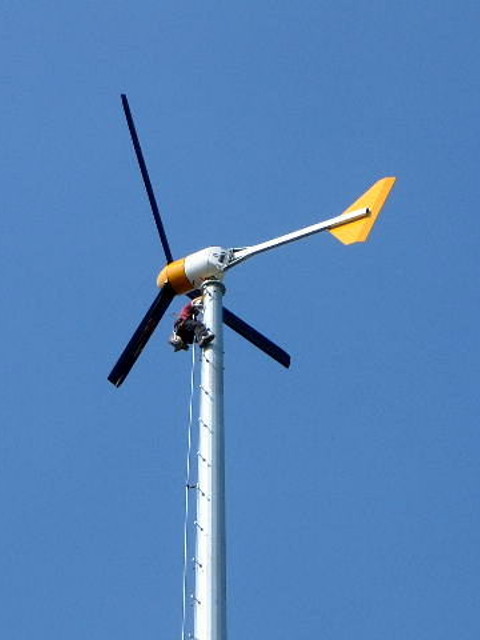
The final result! - The first photo is from far in back of the property. The tower can be seen in the middle distance. The second photo shows the awesome sight from the front of the house. Who said wind turbines can't be a thing of beauty!
